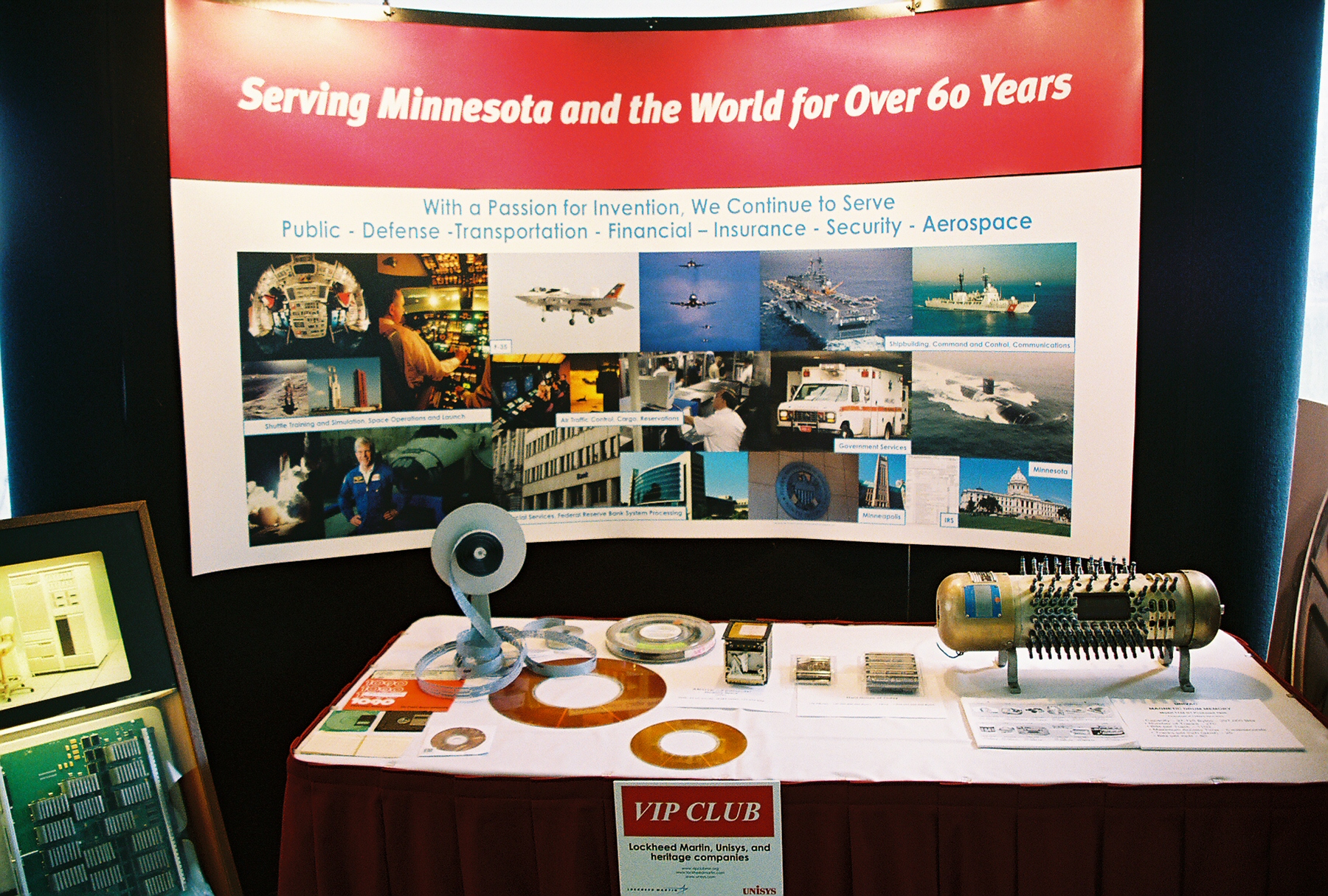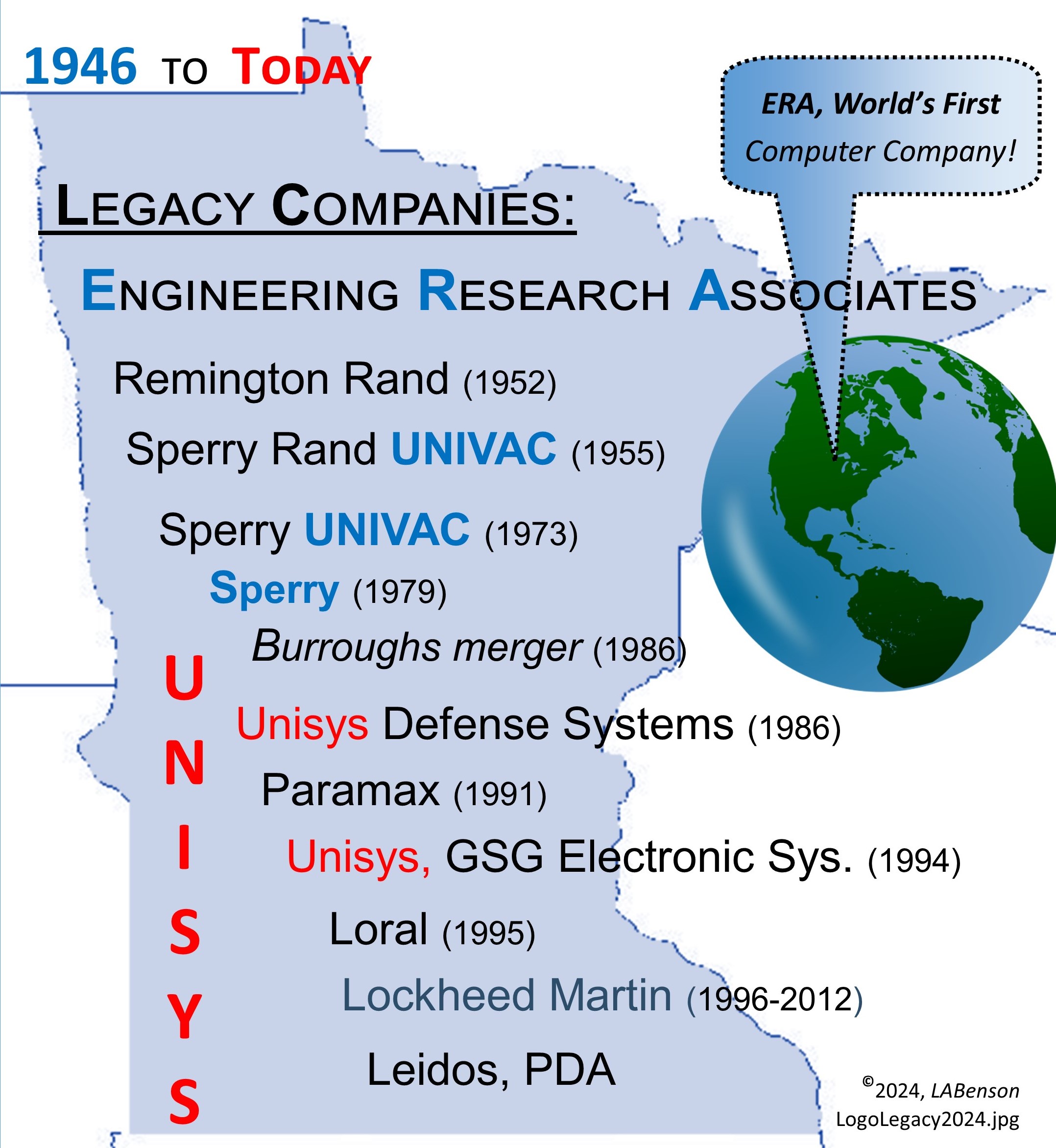

Information Technology (IT) Pioneers
Retirees and former employees of Unisys, Lockheed Martin, and their heritage companies
Our Systems, Chapter 60
1. Introduction
The grandmother of our Legacy systems is the very early 'classified' computer work by Engineering Research Associates (ERA) - discussed in the Computers, 24-bit chapter 41 and a few other places. These led to the Aerospace missile launch computers, space-borne processors, and associated software.
The grandfather of our Legacy
systems is the Naval Tactical
Data Systems (NTDS), presented in
the Navy Systems chapter 67. NTDS included radar inputs, tracking, displays
for operators, and communications to other ships for fleet defense.
NTDS soon grew to encompass shore based Marine Corps Tactical Data Systems
(MTDS) with communications back to Navy ships. In 2008, the modernized
NTDS system was successful in launching and guiding a missile to shoot
an errant satellite out of the sky.
Our initial Navy Airborne Anti-Submarine
Warfare systems communicated with NTDS via Link 11
protocols. Our early International systems were variations of NTDS put
together for foreign navies. Working with Lockheed, our Navy air surveillance
systems extended from the P-3C and S-3A platforms to Canadian, Australian,
Japanese, and other ocean search applications - some still in operation since
the first 1963 system contract.
NTDS tracking and flight sector analysis became the basic systems technology
for the FAA's Air Traffic Control Systems. In the late
80's Air Traffic Control spawned the Special Air
Sovereignty Operations Centers
(ASOC) that have now been installed in ten foreign nations.
Aerospace Systems involving communications have been with us for decades - the tracking of various NASA orbits and telemetry there from. Did you know that we were the Apollo Mission computer software supplier?
Government systems began in the eighties and early nineties. The corporation began defense conversion studies as the former Soviet Bloc's military threat disappeared and defense contracts shriveled up. [lab]
2.0 Systems Evolution
Our management and systems engineers provided excellence to many government and commercial industries for five decades plus. These are illustrated in the back panel display [right] from Minnesota's sesquicentennial display in May, 2008. Most of these are discussed in more detail in the 'tabbed' chapters.
We expect to develop yet another chapter - commercial systems descriptions and history during future studies. Also, we haven't detailed the development of the Desert Hawk drone used by the British Army.
3.0 Tactical Air Command by Lyle Franklin
I do remember the TSQ-13 Tactical Air Command System. The system was designed by MIT Lincoln Labs and Univac implemented
the design. The function was to automate the detection of incoming aircraft and missiles and then provide
controllers information relating to ability to intercept and also determine the optimum attack angle. Once this was established the
analog computer could take over the guidance and the commands to the pilot. These commands could be given via instrumentation in
the aircraft or by synthesized voice.
Univac designed all the hardware. The interface to the long range radar was fed to the Data Display Group. This was the radar data
as well as the Identification, Friend or Foe (IFF) information. The target was locked on and given a tracking number. Information
such as friend or foe or unknown was also assigned to the track number. When the target was identified as hostile the Air Force
Controllers would simulate intercepts using the analog computer. The target as well as the friendly aircraft positions were fed into
the computer. Based on current positions and speed the computer could determine whether the intercept was feasible. The controller
could also feed changes in course of the friendly to obtain optimum attack angle. Once the solution was selected the system provided
the guidance to the pilot via the Voice and Digital Data Links.
The controller monitored the intercept. The Vector Computer Group consisted of six analog computers so the system could handle six
intercepts.
The system itself was heavily analog and digital. A card tester was developed using plugs to interconnect the boards to the test
setup. As I remember there were 200 plus card types both analog and digital, vacuum tube and transistor. Don Grittner designed the
tester and Lyle Franklin and John Saline designed the test blocks and test procedure for the boards.
My involvement in the program was to develop and then instruct the Officers System Course. Glen Kregness was my assistant. We were
also responsible for instructing the Voice and Digital specialist course. As the TACS computer was analog, I acquainted Glen with
the only digital computer I knew, the Mod 0 File Computer.
This was a great time to be in the training department. Ed Olzewski loaned us out to anyone that had a need and we performed. TACS also
had a large screen display designed by Skiotron. Dick Huberty and Lyle Gilbertson were transferred to work on that unit.
In addition to the card tester, I was assigned to design and conduct first article test for the Voice and Digital Data Links.
The TACS units were delivered to all US TACS installations. I was involved in installing the Shaw AFB site as well as teaching
the six week specialist course on the Vector Computer Group. The real expert was Al Gresbrink. Al had been a Navy Chief specializing
in the Mk1A analog fire control computer used by the US Navy.
Curt Christensen was the design engineer on the Voice and Digital Data Links and would be able to expand/correct this as well as identify
other engineers and personnel on the program. Roy Hegler led the Field Engineering group.
![]() At that time, training and field engineering
reported to Larry Reid. Clint Haggerty was initially in the Publications Department and later a field engineer before heading up the NTDS
Training Group. Many of the others involved that I knew are no longer with us. This was 50 years ago. Ed Smith was also a design engineer
on the front end of the system.
At that time, training and field engineering
reported to Larry Reid. Clint Haggerty was initially in the Publications Department and later a field engineer before heading up the NTDS
Training Group. Many of the others involved that I knew are no longer with us. This was 50 years ago. Ed Smith was also a design engineer
on the front end of the system.
The TACS experience was very helpful in the development of NTDS. The follow on system termed BADGE was won by Hughes.
More about the TACS system!
4.0 Desert Hawk
![]() Rarely known is that this military surveilence drone development of
electronics was done in Eagan Minnesota. The engineers who worked on the project later started a local company for
commercial drone applications, Sentera.
Rarely known is that this military surveilence drone development of
electronics was done in Eagan Minnesota. The engineers who worked on the project later started a local company for
commercial drone applications, Sentera.
